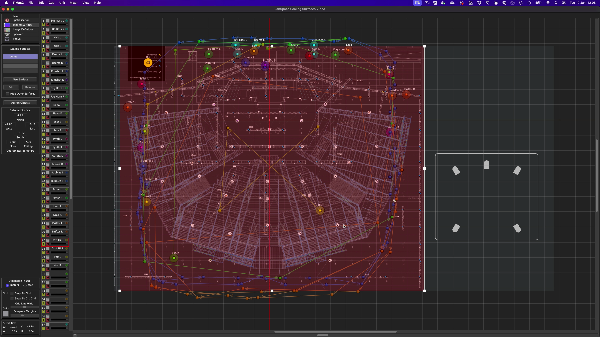The user interface of the new Scaling Surfaces tool for TiMax SoundHub.
New tool designed to allow users to re-scale a spatial show file from a studio playback environment to an auditorium with two mouse clicks.
TiMax has announced the expansion of the capabilities of its SoundHub platform with a new tool named Scaling Surfaces, designed to allow users to re-scale a spatial show file from a studio playback environment to an auditorium with two mouse clicks.
Users can re-scale their show for a new venue by changing the Scaling Surface size, shape, and height, and they can do this at any time. When an object is attached to a Scaling Surface, and that surface is moved, all spatial positioning and movement automation for that object, across the entire show file, moves with it.
Users can also distribute content without knowing the absolute scale of the playback environment or system, enhancing flexibility. They can also utilize more than one Scaling Surface in a file – for example, to cover a “stage” and “auditorium” area, where the two Scaling Surfaces needed to be resized separately.
Integrated into the PanSpace window, between Image Definition and Spatialisation workflow elements, Scaling Surfaces is designed to provide time savings within the audio rendering workflow. It offers a familiar interface; with eight drag handles and direct manipulation controls, users can resize, reshape, and reposition spatial surfaces just as they would an image in a photo editor.
Scaling Surfaces requires TiMax SoundHub version 6.10 or later and is showcased at the new TiMax Spatial Studios in Tileyard, London. Go here to try it.
Click here for original article.













